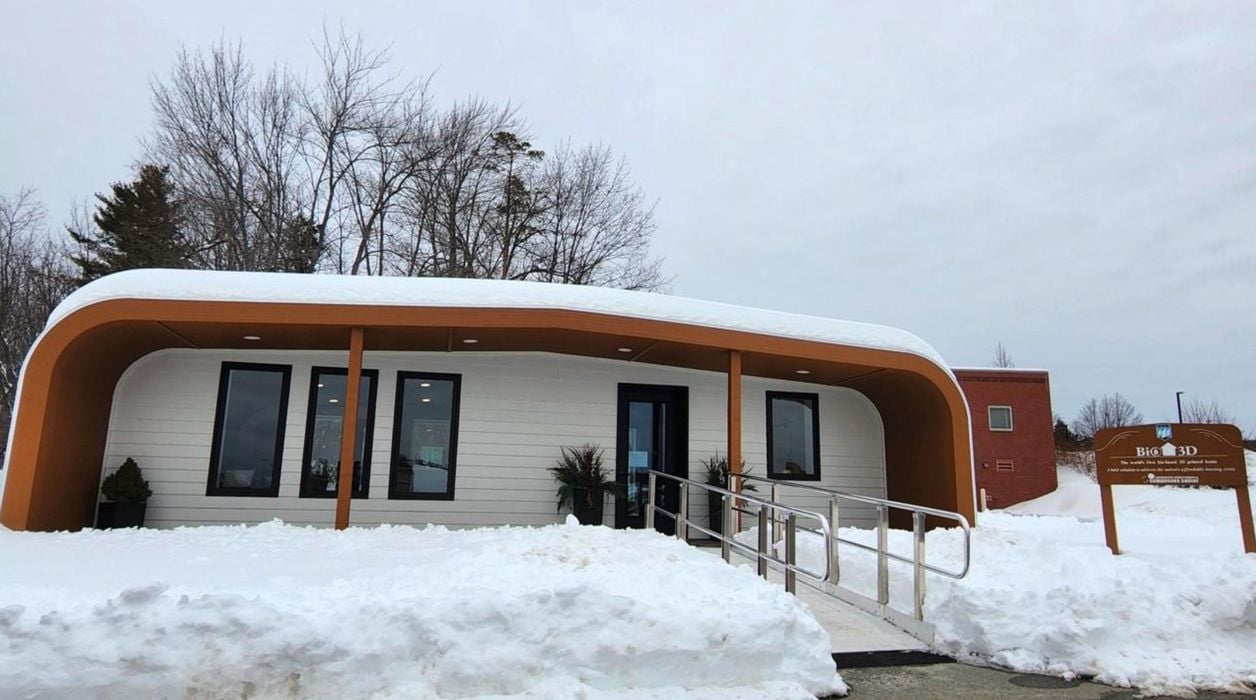
The University of Maine continues to develop their “BioHome” project.
We first reported about the project about a year ago when it was announced that the University’s researchers had developed a way to 3D print a house (or at least major structural portions thereof) using bio-based materials.
The project was successful; they were able to produce a small 600sf home that was largely made of wood fiber combined with bio-based resins. The wood fiber is obtained from manufacturing residue.
The approach is quite eco-friendly, as there was very little construction waste: additive is always better in that respect that subtractive approaches. In addition, it was believed that some amount of CO2 savings would be incurred by the project. This is quite important because the construction industry — in particular concrete works — accounts for a massive portion of global CO2 emissions.
A year later they seem to have that data.
The initial 3D printed house was subjected to extreme weather in its Maine location, with temperatures ranging from 1-105F (-17C to +41C). This clearly tested the insulation capabilities of the structure.
The University of Maine explained that the building effectively sequestered some 46 tons of CO2, which is significant. In addition the structure was able to meet the design requirements of the International Code Council and ASCE 7 loadings.
Since their launch the team has been able to increase the print speed from 20 pounds per hour to a massive 500 pounds per hour (9-227kg). That capacity leads to their next goal: producing a 600sf home each 48 hours.
University of Maine’s Advanced Structures and Composites Center’s Executive Director Habib Dagher said:
“The data collected over a year of outdoor exposure in Maine has proved that the technology is sound. Now, our focus is to scale up the production process. With the Factory of the Future, our goal is to be able to produce one of these 600-square-foot homes every 48 hours. We’ve created a house. Now it’s time to create neighborhoods.”
Their “BioHome 2.0” initiative is a very intriguing notion, as the recent increases in homelessness demand quick answers to housing shortages. Could it be that 3D printed homes using bio materials could be part of the answer?
If they can produce homes in only two days, that just might be what we need.
